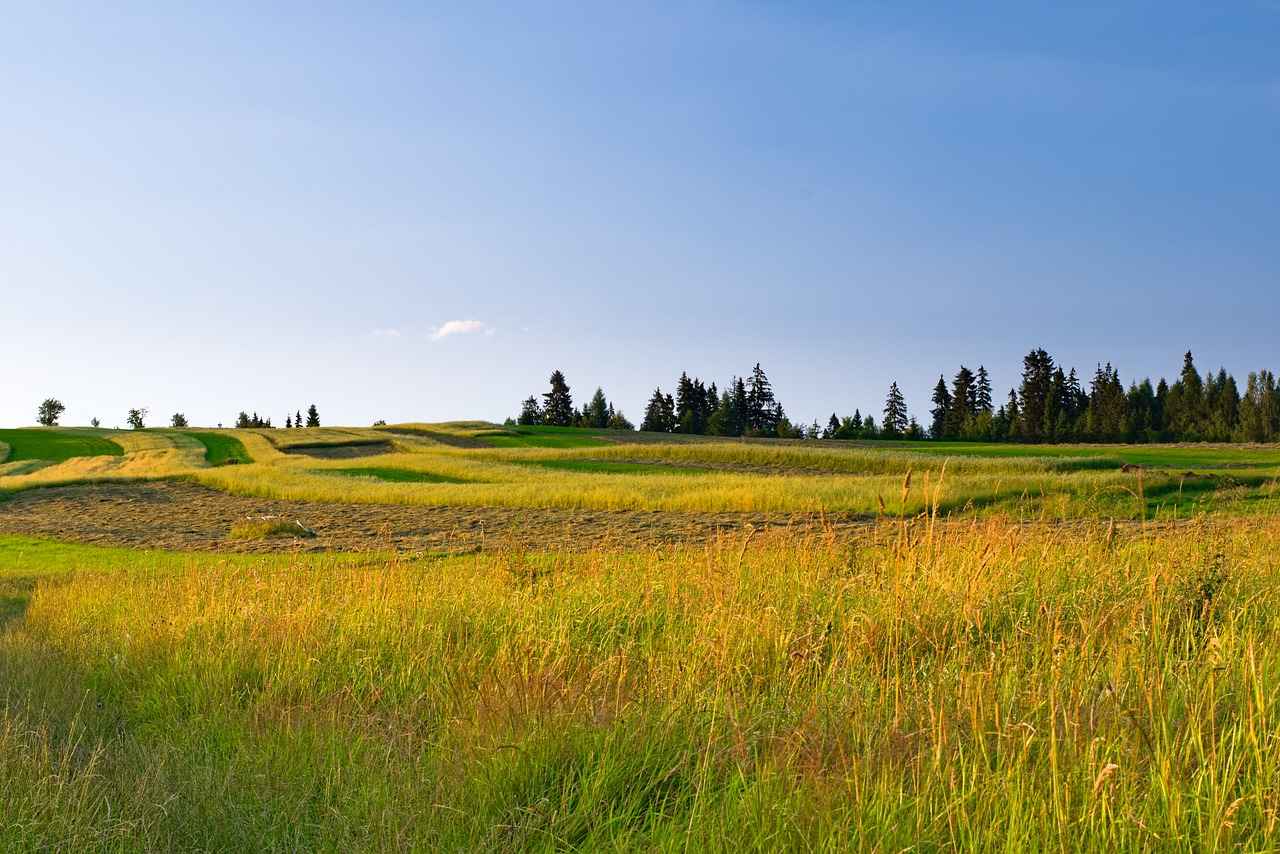This article provides a comprehensive guide on disabling grass in EverQuest, enhancing your gaming experience by improving visibility and performance. Learn various methods to achieve this effectively.
Understanding the Grass Feature in EverQuest
Grass in EverQuest serves to create a more immersive and realistic environment. While it enhances the visual appeal, it can also lead to performance issues, particularly on lower-end systems. Players often find that the presence of grass can obscure important gameplay elements, making it challenging to spot enemies or navigate the terrain effectively. By understanding the implications of this feature, players can make informed decisions about whether to keep it enabled or disable it for a smoother gaming experience.
Why Turn Off Grass in EverQuest?
Disabling grass can significantly enhance your gaming experience in several ways:
- Improved Frame Rates: Players often report smoother gameplay and higher frame rates after turning off grass, especially beneficial during intense combat scenarios.
- Reduced Distractions: Grass can clutter the screen, making it difficult to focus on critical gameplay elements. Turning it off can lead to a clearer view of your surroundings.
- Enhanced Visibility: With grass disabled, players can spot enemies and other players more easily, which can be crucial in both PvE and PvP settings.
How to Access Game Settings
To turn off grass, you need to access the game settings. Follow these steps:
- Launch EverQuest and log into your account.
- Navigate to the main menu and select Options.
- From the Options menu, click on Graphics settings.
Understanding how to navigate these menus is essential for effective customization of your gaming experience.
Adjusting Graphics Settings
Within the graphics settings, players can find numerous options to tailor their visual experience. Look for the section that pertains to environmental features. Here, you will discover the settings related to grass. Adjusting these settings can lead to significant improvements in performance:
- Lowering Graphics Quality: Reducing the overall graphics quality can automatically disable grass and other demanding visual effects.
- Customizing Individual Settings: Some versions of the game allow you to toggle specific features like grass independently.
Finding the Grass Option
Identifying the specific option to disable grass can be tricky. In many cases, you will find it listed under Terrain or Environmental Effects. If you are having trouble locating it, consider consulting the game’s help section or community forums for guidance.
Understanding Graphics Quality Levels
Different graphics quality settings affect how grass and other environmental features are rendered. Lowering the quality can not only disable grass but also improve overall game performance. Players should experiment with these settings to find the right balance between visual appeal and performance.
Using the EverQuest Configuration File
For more advanced users, editing the configuration file can provide greater control over visual elements, including grass. This method is often preferred by players who want to achieve specific performance benchmarks:
Locating the Configuration File
The configuration file is typically found in the game installation directory. It may be named something like eqclient.ini. Knowing where to find this file is the first step to making manual adjustments.
Editing the Configuration File
Once located, you can open the configuration file with a text editor. Look for the line that mentions grass settings and change the value to disable it. Make sure to save your changes before closing the file.
Performance Benefits of Disabling Grass
Turning off grass can lead to noticeable performance enhancements, especially on older hardware. Players may experience:
- Higher FPS: With grass disabled, your system can allocate more resources to rendering other important visual elements.
- Less Lag: Disabling unnecessary visuals can reduce lag, particularly in crowded areas.
Player Experiences and Feedback
Many players have shared their experiences regarding the effectiveness of disabling grass. Feedback often highlights improved visibility and performance, especially in competitive play. Players report feeling more engaged in combat when they can clearly see their surroundings without the obstruction of grass.
Common Issues When Turning Off Grass
While disabling grass can be beneficial, some players may encounter issues. Common problems include:
- Graphical Glitches: In some cases, disabling grass can lead to unexpected visual artifacts.
- Game Crashes: Rarely, editing the configuration file incorrectly can cause the game to crash.
To troubleshoot these issues, ensure that all changes are made correctly and consider reverting to default settings if problems persist.
Alternative Visual Adjustments for Better Gameplay
If turning off grass isn’t sufficient, there are other visual adjustments players can make to enhance their gameplay experience. Options include:
- Adjusting Shadow Quality: Lowering shadow settings can also improve performance.
- Disabling Other Environmental Effects: Consider turning off additional features that may hinder performance.
By exploring these adjustments, you can create a tailored gaming experience that suits your preferences.

Understanding the Grass Feature in EverQuest
In EverQuest, the presence of grass serves as a significant visual feature that enhances the game’s immersive environment. This element not only contributes to the aesthetic appeal of the landscapes but also plays a role in how players experience the game world. However, while grass adds a layer of realism, it can also pose challenges that lead players to contemplate disabling this feature.
One of the primary reasons players appreciate grass in EverQuest is the realism it brings to the game. The lush green blades swaying in the virtual wind create a vibrant atmosphere that mimics real-world environments. This attention to detail helps players feel more connected to the fantasy world they are exploring. However, this visual enhancement comes at a cost.
Grass can significantly impact game performance, especially for those using lower-end systems. The rendering of grass requires additional resources, which can lead to decreased frame rates and lag during gameplay. This is particularly noticeable in busy areas where numerous players and NPCs are present. As a result, many players find themselves weighing the benefits of visual immersion against the practicalities of smooth gameplay.
Furthermore, the presence of grass can sometimes obstruct visibility. In intense combat situations or during critical quests, tall grass may obscure important visual cues, making it difficult for players to spot enemies or navigate effectively. This can lead to frustration, prompting players to consider turning off grass to enhance their situational awareness.
Ultimately, the decision to keep or disable grass in EverQuest hinges on individual preferences and gaming setups. Players who prioritize visual fidelity may choose to retain the feature for its aesthetic contributions, while those seeking optimal performance and visibility may opt to turn it off. Understanding the implications of this feature is crucial for players looking to tailor their gaming experience to their specific needs.
In summary, the grass feature in EverQuest is a double-edged sword. While it adds depth and realism to the game, it can also hinder performance and visibility. Players must assess their priorities and make informed decisions based on their gaming context.

Why Turn Off Grass in EverQuest?
In the immersive world of EverQuest, grass is a visual element that enhances the game’s realism. However, it can also hinder performance, especially for players on lower-end systems. Disabling grass can lead to a more fluid gaming experience, allowing players to focus on their objectives without unnecessary distractions.
Improved Frame Rates
One of the primary reasons players choose to turn off grass is to significantly enhance their frame rates. Grass rendering can consume a considerable amount of system resources, which may lead to lag and stuttering during gameplay. By disabling this feature, players can free up these resources, resulting in smoother animations and faster response times. This is particularly beneficial in high-stakes situations where every millisecond counts, such as in raids or PvP encounters.
Reduced Visual Distractions
Grass can sometimes obscure important visual cues in the game, such as enemy movements or critical items on the ground. By turning off grass, players can enjoy a clearer view of their surroundings, making it easier to spot threats and opportunities. This is especially advantageous for competitive players who rely on quick reactions and situational awareness to outmaneuver their opponents.
Enhanced Visibility
Many players report that disabling grass improves overall visibility in the game. The addition of grass can create a cluttered environment that makes it challenging to navigate. By turning off this feature, players can better appreciate the game’s design and focus on their character’s journey without visual hindrances. This clearer perspective can lead to a more enjoyable gaming experience.
Customization for Performance
For those who prioritize performance over aesthetics, turning off grass is a straightforward customization option. EverQuest allows players to adjust their graphics settings to suit their personal preferences and hardware capabilities. By disabling grass, players can create a tailored gaming environment that meets their needs, enhancing their overall enjoyment of the game.
Community Insights
Feedback from the EverQuest community indicates a strong consensus regarding the benefits of turning off grass. Many players have shared their experiences, noting that the performance boost and improved visibility significantly enhance their gameplay. This collective insight reinforces the notion that disabling grass is a practical choice for both casual and competitive players alike.
In summary, turning off grass in EverQuest offers a multitude of benefits, including improved frame rates, reduced distractions, and enhanced visibility. By making this simple adjustment, players can elevate their gaming experience, allowing them to focus on what truly matters: their adventures in the enchanting world of Norrath.

How to Access Game Settings
Accessing the game settings in EverQuest is a fundamental step for players looking to customize their visual experience. The settings menu provides various options that allow players to tailor the game’s appearance to their preferences, which can significantly enhance gameplay. Here’s a detailed guide on how to navigate through the settings menu effectively.
Step-by-Step Guide to Accessing Settings
- Launch the Game: Start by launching EverQuest from your gaming platform or launcher.
- Main Menu Navigation: Once the game is loaded, you will be greeted with the main menu. Here, look for the Options button, which is typically located at the bottom of the screen.
- Accessing the Options Menu: Click on Options to open the settings menu. This menu will present you with various tabs, including Graphics, Audio, and Gameplay.
- Select Graphics Settings: To customize visual features, select the Graphics tab. This section contains all the visual settings related to the game’s environment, including grass, shadows, and textures.
Understanding the Menus
The settings menu is designed to be user-friendly, but it can still be overwhelming due to the number of options available. Each tab serves a specific purpose:
- Graphics: This tab allows you to adjust the quality of visual effects, including the ability to turn off grass, modify resolution, and change texture quality.
- Audio: Here, you can adjust sound effects and music volume, as well as enable or disable specific audio features.
- Gameplay: This section includes options for gameplay mechanics, such as key bindings and user interface settings.
Customizing Your Experience
Once you are in the Graphics settings, you will find sliders and checkboxes that enable you to customize the game’s appearance according to your hardware capabilities and personal preferences. For instance, if you want to improve performance, you may choose to lower the graphics quality or disable certain features, such as grass.
Saving Your Settings
After making the desired adjustments, ensure you save your settings before exiting the menu. There is usually a Save button at the bottom of the settings menu. Failing to save your changes may result in reverting to the previous settings when you restart the game.
Testing Your Changes
After saving your new settings, it is advisable to enter the game and test the changes you have made. Pay attention to how the game performs and whether the visual adjustments meet your expectations. If you find that your gameplay experience has improved, you can continue to fine-tune the settings until you find the perfect balance between performance and aesthetics.
Conclusion
Navigating the game settings in EverQuest is a crucial skill for any player looking to enhance their experience. By following these steps, you can easily access and customize your settings to optimize both performance and visual quality. Whether you are a casual player or a seasoned veteran, understanding how to navigate the settings menu will give you greater control over your gaming experience.

Adjusting Graphics Settings
In the immersive world of EverQuest, graphics settings play a crucial role in shaping your gaming experience. By fine-tuning these settings, players can enhance visual quality, improve performance, and tailor the game to their personal preferences. This section will guide you through the process of adjusting graphics settings, specifically focusing on the options available for modifying environmental features, including grass.
To begin, players need to access the graphics settings menu. This can typically be done from the main menu or during gameplay by navigating to the options section. Once you are in the graphics settings, you will encounter a variety of sliders and toggle options that allow you to customize the visual elements of the game.
- Resolution: Adjusting the resolution can significantly impact the clarity of the game. Higher resolutions provide more detail but may require more processing power.
- Texture Quality: This setting controls the level of detail in the textures used throughout the game. Higher quality textures enhance realism but can affect performance.
- Shadow Quality: Shadows can add depth to the environment, but they can also be resource-intensive. Players may choose to lower this setting to boost frame rates.
- Grass Density: This is where players can specifically adjust the presence and density of grass in the game. Reducing this can improve visibility and performance.
When it comes to modifying grass settings, players should look for an option labeled “Grass Density” or something similar. By lowering this setting, you can reduce the amount of grass rendered in the game, which can help in spotting enemies and navigating the landscape more easily. This adjustment is particularly beneficial in competitive scenarios where every detail counts.
Another important aspect to consider is the Graphics Quality Level. This setting often encompasses a range of presets, from low to ultra. Choosing a lower quality level can automatically adjust various settings, including grass density, shadows, and texture quality, to optimize performance on your system. Players with lower-end hardware may find that selecting a lower quality level significantly enhances their gameplay experience.
Additionally, players should be aware of the potential impact on frame rates. By experimenting with different graphics settings, you can find a balance that provides both visual appeal and smooth performance. It’s advisable to make incremental changes and test the game to see how each adjustment affects your gameplay.
For those who want to dive deeper into customization, consider exploring advanced settings. Some games allow for manual adjustments through configuration files, which can provide more granular control over graphics options. However, this approach requires caution as improper changes can lead to game instability.
In summary, adjusting graphics settings in EverQuest is essential for enhancing your overall gaming experience. By carefully modifying options related to grass and other environmental features, players can improve visibility, boost performance, and create a more enjoyable gameplay environment. Remember to regularly revisit these settings as updates and patches may introduce new features or change existing ones, allowing for even more customization.
Finding the Grass Option
Identifying the specific option to disable grass in EverQuest can be a bit challenging, especially for new players. The grass feature, while enhancing the game’s visual appeal, can also be a source of distraction and performance issues. This section will provide you with a step-by-step guide to help you locate the grass toggle within the graphics settings menu effectively.
- Step 1: Open the Game Menu – Start by launching EverQuest and logging into your character. Once in the game, press the Escape key on your keyboard to bring up the game menu.
- Step 2: Access the Options Menu – From the game menu, look for the Options button. Click on it to access a variety of customizable settings.
- Step 3: Navigate to Graphics Settings – Within the Options menu, you will see several tabs. Click on the Graphics tab to view the graphical settings available for your game.
- Step 4: Locate the Grass Toggle – Scroll through the graphics settings until you find the option labeled Grass. This setting may be accompanied by a checkbox or a slider that allows you to enable or disable the grass feature.
- Step 5: Adjust the Setting – Once you have found the grass option, simply check or uncheck the box to disable or enable grass, respectively. If it’s a slider, move it to the left to turn off grass.
- Step 6: Save Your Changes – After adjusting the grass setting, make sure to click on the Apply button at the bottom of the graphics settings menu to save your changes.
- Step 7: Exit the Menu – Finally, exit the options menu and return to the game. You should notice an immediate change in the environment, with grass either appearing or disappearing based on your selection.
Additional Tips:
- If you’re having trouble finding the grass option, consider checking the game’s official forums or community guides for visual aids.- Remember that disabling grass can improve performance, especially in areas with a lot of action or detailed environments.- If you experience any issues after changing the setting, you can always revert back to the original settings using the same steps.
By following these steps, you can successfully toggle the grass feature in EverQuest, allowing for a more tailored gaming experience that suits your preferences. Whether you prioritize visual aesthetics or gameplay performance, knowing how to adjust these settings is essential for any player looking to enhance their time in the game.
Understanding Graphics Quality Levels
In the world of gaming, particularly in expansive MMORPGs like EverQuest, the graphics quality levels play a crucial role in how the game environment is rendered. These settings can significantly affect not only the visual fidelity of the game but also the performance and overall experience for players. Understanding how these levels impact features like grass rendering can provide players with the knowledge to optimize their gameplay.
Graphics quality levels in EverQuest range from low to ultra, each offering a different balance between visual detail and performance. At lower settings, the game prioritizes performance, which can lead to simplified graphics and a more basic representation of elements such as grass. This may include fewer blades of grass, less detail in textures, and a more uniform appearance. While this can enhance frame rates, it may also affect the immersive experience that many players seek.
On the other hand, higher graphics settings allow for a more detailed and realistic portrayal of grass. Players can expect to see individual blades of grass swaying in the wind, casting shadows, and contributing to the overall ambiance of the game. However, these enhancements come at a cost: increased system resource usage. Players with lower-end systems may experience lag or reduced frame rates, making it challenging to enjoy the game fully.
Adjusting the graphics quality levels not only impacts how grass is rendered but also influences the visibility of other important elements within the game. For instance, when grass density is high, it can obscure critical visual cues or enemy movements, which may be detrimental in competitive situations. Thus, players should consider their play style when selecting their graphics settings. Casual players might prefer the aesthetic appeal of higher settings, while competitive players may opt for lower settings to enhance visibility and performance.
Furthermore, players can experiment with different graphics quality levels to find a balance that suits their individual preferences. Many gamers find that a medium setting can provide a good compromise, offering decent visual quality without overwhelming their system. This flexibility allows players to tailor their experience according to their hardware capabilities and gameplay needs.
Ultimately, understanding how graphics quality levels affect grass rendering in EverQuest is essential for optimizing both performance and enjoyment. By adjusting these settings, players can enhance their visibility, improve frame rates, and create an environment that aligns with their gaming objectives. Whether prioritizing aesthetics or performance, the choice of graphics quality levels is a vital consideration for every EverQuest player.

Using the EverQuest Configuration File
For advanced users, the EverQuest configuration file offers a powerful way to customize visual elements beyond what is available in the standard game settings. By editing this file, players can gain enhanced control over their gaming experience, including the ability to turn off grass for improved performance and visibility. This section will guide you through the process of accessing and modifying the configuration file to achieve this adjustment.
Locating the Configuration File
The first step in editing the configuration file is to locate it on your computer. Typically, the configuration file can be found in the game installation directory. Follow these steps to find it:
- Navigate to your EverQuest installation folder. This is usually located in
C:\Program Files (x86)\Sony Online Entertainment\Installed Games\EverQuestor a similar path depending on your system. - Look for a file named
eqclient.ini. This is the configuration file you will be editing. - Make a backup copy of the
eqclient.inifile before making any changes. This ensures you can restore the original settings if needed.
Editing the Configuration File
Once you have located the configuration file, you can proceed to edit it. Here’s how to do it safely and effectively:
- Open the
eqclient.inifile using a text editor such as Notepad. - Search for the line that contains
Grass1. This line indicates that grass is currently enabled. - Change the value from
1to0to disable grass. The line should now readGrass0. - Save the changes and close the text editor.
- Launch EverQuest to see the changes take effect. You should notice an improvement in performance and visibility.
Editing the configuration file can seem daunting, but it provides a level of customization that is not achievable through the standard settings menu. By disabling grass, players can enhance their gameplay experience, especially in areas where visibility is crucial.
It’s important to note that while modifying the configuration file can lead to better performance, it may also affect other visual elements in the game. Therefore, it is advisable to make incremental changes and test the game after each adjustment.
Locating the Configuration File
To effectively manage your gaming experience in EverQuest, is an essential first step. This file houses various settings that can be manually adjusted to enhance your gameplay. Understanding where to find this file and how to access it can significantly impact your gaming performance.
The configuration file for EverQuest is typically found in the game’s installation directory. Depending on your operating system, the path may vary slightly:
- For Windows users: Navigate to
C:\Program Files (x86)\Sony Online Entertainment\Installed Games\EverQuestor wherever you have installed the game. - For Steam users: If you installed EverQuest via Steam, the path is usually
C:\Program Files (x86)\Steam\steamapps\common\EverQuest.
Once you have located the game directory, look for a file named eqclient.ini. This is the configuration file that contains all the settings related to your game preferences, including graphics, audio, and controls.
Why is the Configuration File Important?
The configuration file is crucial for players who want to customize their gaming experience beyond what is available in the standard settings menu. By editing this file, players can fine-tune various aspects of the game, such as:
- Disabling grass for improved visibility
- Adjusting the field of view
- Customizing key bindings
Editing the configuration file is particularly beneficial for players with lower-end systems, as it allows them to optimize performance by turning off certain visual effects that may be taxing on their hardware.
How to Access the Configuration File
To access the configuration file, follow these steps:
- Open the File Explorer on your computer.
- Navigate to the EverQuest installation directory as mentioned above.
- Locate the
eqclient.inifile. - Right-click on the file and select Edit to open it in a text editor such as Notepad.
Once the file is open, you can make the necessary adjustments. However, it is essential to create a backup of the original file before making any changes. This way, if something goes wrong, you can easily restore the default settings.
In summary, finding and accessing the configuration file is a straightforward process that opens up a world of customization options for EverQuest players. By taking the time to locate this file and understand its significance, you can significantly enhance your gaming experience.
Editing the Configuration File
For players seeking greater control over their EverQuest experience, editing the configuration file offers a powerful method to customize settings beyond what the in-game options provide. This section will guide you through the process of safely editing the configuration file to disable grass, which can lead to improved performance and visibility.
Step 1: Locating the Configuration File
The first step in editing the configuration file is to locate it within your system. The configuration file, often named eqclient.ini, is typically found in the installation directory of EverQuest. To find it, follow these steps:
- Open File Explorer on your computer.
- Navigate to the directory where EverQuest is installed. This is usually found in
C:\Program Files (x86)\Daybreak Game Company\Installed Games\EverQuest. - Look for the file named
eqclient.ini.
Step 2: Creating a Backup
Before making any changes, it is crucial to create a backup of the configuration file. This ensures that you can restore the original settings if anything goes wrong. To create a backup:
- Right-click on
eqclient.iniand select Copy. - Paste it in the same directory and rename it to
eqclient_backup.ini.
Step 3: Opening the Configuration File
Once the backup is created, open the configuration file using a text editor such as Notepad. Right-click on eqclient.ini and select Open with, then choose Notepad. This will allow you to view and edit the file’s content.
Step 4: Modifying the Grass Setting
Within the configuration file, you will need to find the specific line that controls the grass feature. Look for a line that reads:
Grass1
To disable grass, change the value from 1 to 0, resulting in:
Grass0
This change will effectively turn off the grass feature in the game.
Step 5: Saving the Changes
After making the necessary modifications, save the changes by clicking File in the top menu, then select Save. Close the text editor to complete the process.
Step 6: Launching EverQuest
Finally, start EverQuest to see the changes take effect. You should notice a difference in performance and visibility, particularly in grass-heavy areas of the game.
Editing the configuration file can seem daunting for some players, but by following these steps carefully, you can customize your gaming experience significantly. Remember that any modifications should be approached with caution, and always keep a backup of your original settings.

Performance Benefits of Disabling Grass
Disabling the grass feature in EverQuest can lead to significant improvements in gaming performance, especially for those using lower-end systems. This section delves into the various technical enhancements players may experience after turning off this visual element.
- Improved Frame Rates: One of the most noticeable benefits of disabling grass is the increase in frame rates. Grass rendering can consume considerable processing power, which may lead to lag or stuttering during gameplay. By turning off this feature, players often see a smoother experience, allowing for better responsiveness in fast-paced scenarios.
- Reduced Resource Usage: Grass requires additional resources from the CPU and GPU. When players disable this feature, they free up valuable resources that can be redirected towards other graphical elements or game mechanics, enhancing the overall performance of the game.
- Enhanced Visibility: Grass can obstruct a player’s view of important game elements, such as enemies or critical items. By turning off grass, players can enjoy a clearer line of sight, making it easier to spot threats and navigate the environment effectively. This is particularly beneficial in competitive scenarios where every second counts.
- Minimized Distractions: For many players, the visual clutter created by grass can be distracting. By disabling it, players can focus more on the gameplay and less on the environment, leading to a more immersive and enjoyable experience.
- Customization and Personalization: Disabling grass allows players to tailor their gaming experience to fit their preferences. Some players may prefer a minimalist aesthetic that prioritizes performance over realism. This flexibility can lead to a more satisfying gaming environment, especially for those who prioritize competitive play.
In summary, the decision to turn off grass in EverQuest can yield several performance benefits. Players can experience: - Higher frame rates - Lower resource consumption - Improved visibility - Fewer distractions - Greater customization options
By taking advantage of these benefits, players can enhance their overall gaming experience. Whether for casual play or intense competition, disabling grass can be a strategic move that leads to better performance and enjoyment in EverQuest.
In conclusion, while grass adds a layer of realism to the game, its impact on performance cannot be overlooked. Players should weigh the benefits of disabling this feature against their personal preferences and gaming style to make the best decision for their gameplay experience.

Player Experiences and Feedback
Real player feedback is crucial in understanding the impact of disabling grass in EverQuest. Many players have shared their experiences, which can provide valuable insights into how this adjustment affects visibility and performance during gameplay. Below, we delve into the diverse opinions and experiences of players who have opted to turn off grass, highlighting both the positive outcomes and any challenges faced.
- Improved Visibility: A significant number of players report that disabling grass enhances their overall visibility in the game. This adjustment allows for a clearer view of the environment, making it easier to spot enemies and navigate complex terrains. Players have noted that without the distraction of grass, they can focus more on gameplay, leading to a more immersive experience.
- Performance Boost: Many gamers, especially those using lower-end systems, have experienced a noticeable improvement in frame rates after turning off grass. This increase in performance is vital for competitive players who rely on smooth gameplay to execute strategies effectively. Several players have shared their before-and-after performance metrics, showcasing significant gains in FPS (frames per second) after making this change.
- Mixed Reactions: While many players appreciate the benefits of disabling grass, some have expressed mixed feelings. A few players miss the realism and aesthetic appeal that grass adds to the game. They argue that while performance is important, the visual immersion provided by grass is a key component of the EverQuest experience. This highlights the subjective nature of gaming preferences, where visual fidelity can be just as important as performance for some players.
- Technical Issues: Some players have reported encountering technical issues after disabling grass. These can range from minor graphical glitches to more significant performance drops in specific areas of the game. Players have suggested troubleshooting steps, such as adjusting other graphics settings or ensuring that their drivers are up to date, to mitigate these issues.
- Community Feedback: The EverQuest community is vibrant and active, with many forums dedicated to discussing gameplay enhancements. Players often share their configurations and settings that worked best for them, creating a collaborative environment for finding optimal game settings. Feedback from these discussions can guide new players in making informed decisions about whether to disable grass.
In summary, the feedback from players regarding the disabling of grass in EverQuest is varied and insightful. While many enjoy the benefits of improved visibility and performance, others express a desire for the visual elements that grass brings to the game. Understanding these experiences can help players make informed decisions about their own settings, ensuring a personalized and enjoyable gaming experience.

Common Issues When Turning Off Grass
Disabling grass in EverQuest can lead to a more enjoyable gaming experience, but it may also introduce some challenges for players. In this section, we will explore the common issues players face when turning off grass and provide practical troubleshooting tips to help ensure a smooth gaming experience.
While many players appreciate the benefits of turning off grass, such as improved visibility and increased frame rates, there are several common issues that can arise. These issues may vary from graphical glitches to performance inconsistencies. Below, we outline some of the most frequently encountered problems and solutions.
- Graphical Glitches: Some players report experiencing visual artifacts or glitches after disabling grass. These may include flickering textures or missing environmental details. To mitigate these issues, players should ensure their graphics drivers are up-to-date and consider adjusting other graphical settings.
- Performance Fluctuations: While turning off grass typically boosts performance, some players may notice performance drops in certain areas of the game. This can be due to other environmental features still being rendered. Players can try lowering other graphics settings or adjusting the resolution for a more stable experience.
- Missing Environmental Interactions: Disabling grass may lead to the loss of certain interactive elements in the game environment. Players may find that some quests or activities are affected. If this occurs, re-enabling grass temporarily may help restore functionality.
- Difficulty in Navigation: For some players, the absence of grass can make it harder to navigate certain terrains, especially in areas where grass may have provided visual cues. To address this, players can familiarize themselves with the map and use other visual indicators to aid navigation.
To help players overcome these common issues, here are some troubleshooting tips that can enhance the gaming experience:
- Update Graphics Drivers: Always ensure that your graphics drivers are current. Manufacturers frequently release updates that can resolve bugs and improve performance.
- Adjust Graphics Settings: Experiment with other graphics settings if you encounter problems. Sometimes, lowering the overall quality can lead to better stability.
- Revert Changes: If issues persist, consider reverting the grass setting back to its original state. This can provide a temporary solution while you seek further assistance.
- Seek Community Support: Engage with the EverQuest community through forums or social media. Other players may have experienced similar issues and can offer valuable insights or solutions.
By understanding these common issues and utilizing the troubleshooting tips provided, players can enjoy a smoother experience in EverQuest, even after disabling grass. Remember, the goal is to enhance your gameplay, and with the right adjustments, you can achieve that.

Alternative Visual Adjustments for Better Gameplay
In the immersive world of EverQuest, players often seek ways to enhance their gameplay experience. While turning off grass can significantly improve visibility and performance, there are additional visual adjustments that can also contribute to a more enjoyable gaming experience. This section delves into various settings players can tweak to optimize their gameplay without sacrificing the game’s aesthetics.
- Adjusting Texture Quality: Lowering the texture quality can lead to improved frame rates, especially on lower-end systems. This adjustment can help players maintain smooth gameplay during intense battles or crowded areas.
- Disabling Shadows: Shadows can be visually appealing, but they often require substantial processing power. Disabling shadows can free up resources, allowing for a more fluid gaming experience, particularly in environments with complex lighting.
- Reducing Draw Distance: The draw distance setting determines how far into the distance objects are rendered. By reducing this setting, players can enhance performance, especially in vast open areas where rendering distant objects can be taxing on the system.
- Optimizing Anti-Aliasing: Anti-aliasing smooths out jagged edges on objects, but it can also consume considerable resources. Players may find that lowering or turning off this feature can lead to better performance without a significant loss in visual quality.
- Customizing Field of View (FOV): Adjusting the FOV can not only enhance visibility but also provide a more immersive experience. A wider FOV allows players to see more of their surroundings, which can be particularly useful in PvP scenarios.
In addition to these adjustments, players can also explore color correction settings. These settings can help enhance visibility in darker areas or improve the overall vibrancy of the game world. By tweaking the brightness, contrast, and saturation, players can create a more visually appealing environment that suits their preferences.
Another important aspect to consider is the use of performance-enhancing mods. Many players have found success in utilizing mods that optimize graphics settings further than the default options provided by the game. These mods can offer a range of enhancements, from improved textures to better lighting effects, all while maintaining or even boosting performance.
Furthermore, players should regularly check for game updates and patches that may introduce new graphical options or performance improvements. The developers of EverQuest are continually working to enhance the gaming experience, and staying updated can provide players with the latest tools to optimize their settings.
Lastly, engaging with the community through forums and social media can provide valuable insights into visual adjustments that other players have found effective. Sharing tips and experiences can lead to discovering new settings that enhance gameplay and overall enjoyment.
In conclusion, while turning off grass is a great starting point for improving visibility and performance in EverQuest, players should not overlook the multitude of other visual adjustments available. By fine-tuning settings such as texture quality, shadows, draw distance, and more, players can create a customized gaming experience that balances performance with visual appeal.
Frequently Asked Questions
- How do I turn off grass in EverQuest?
You can turn off grass by accessing the graphics settings in the game menu. Look for the option to disable grass under environmental features. If you can’t find it, consider editing the configuration file for more control.
- Will turning off grass improve my game performance?
Absolutely! Disabling grass can significantly boost your frame rates and reduce distractions, especially on lower-end systems. It’s like clearing fog from your vision—everything becomes more focused!
- What if I can’t find the grass toggle?
If you’re having trouble locating the grass toggle in the settings, check the graphics quality levels. Sometimes, adjusting these can indirectly affect how grass is rendered. If all else fails, editing the configuration file is a reliable alternative.
- Are there any downsides to turning off grass?
While most players enjoy better performance after disabling grass, some may miss the visual realism it brings. It’s a trade-off between aesthetics and gameplay efficiency, so consider what matters most to you!
- Can I make other visual adjustments besides turning off grass?
Yes! There are several other visual settings you can tweak to enhance your gameplay experience without compromising the overall look of the game. Explore options like texture quality and shadow settings for further improvements.


